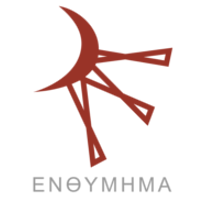Beyond the Moral of the Digital Story. Belén Gache’s Cyberliterature and the Values of Technological Art
DOI:
https://doi.org/10.54103/2037-2426/19555Parole chiave:
Cyberliterature, Digital arts, Axiological judgements, Belén Gache, CompatibilityAbstract
Riferimenti bibliografici
de Boutiny, Lucie, Non (Multimedia novel published). Synesthésie (online journal), 1997-2001.
Fischer-Lichte, Erika, et al. The Routledge Introduction to Theatre and Performance Studies. Routledge, 2014.
Gache, Belén. Kublai Moon. Sociedad Lunar Ediciones, 2017.
—. Kublai Moon Project. http://belengache.net/kublaimoon/.
—. Mundos En Colisión. Second Life Reading. 2016, https://vimeo.com/belengache.
—. Los Pájaros Del Espacio Exterior. Second Life Reading. 2016, https://vimeo.com/belengache.
Grigar, Dene. “Electronic Literature: Where is it?” Electronic Book Review, 28 Dec. 2008.
Hayles, Katherine. Electronic Literature: New Horizons for the Literary. U of Notre Dame P, 2008.
Jimenez, Marc. “Le défi esthétique de l’art technologique”. Le Portique, no. 3, Jan. 1999.
Kozak, Claudia. “Literatura expandida en el dominio digital”. El Taco en la Brea, no. 6, Dec. 2017, pp. 220–45.
Ledesma, Germán. El susurro de los mercados. Capitalismo financiero y literatura digital. UNR Editora, 2022.
Montfort, Nick, and William Gillespie, The Ed Report (hypertext novel) [broken link], 2000.
O’Sullivan, James. Towards a Digital Poetics. Electronic Literature and Literary Games. Palgrave Macmillan, 2019.
Piraud, Mischa-S. “Le piège de la créativité : examen sémantique et pragmatique du capitalisme créatif.” Interventions économiques, no. 57, 2017.
Rasmussen, Eric Dean. Online note on The Ed Report, ELMCIP, https://elmcip.net/creative-work/ed-report, 2017.
Rockhill, Gabriel. Radical History and the Politics of Art: Columbia UP, 2014.
Saum Pascal, Alex, SelfiePoetry. Women&Capitalism (digital poetic work), http://www.alexsaum.com/selfiepoetry-vol2_womencapitalism/, 2016.
Sibilia, Paula. Cuerpxs, Tecnologías y Subjetividades. Online conference for NeoValpo, 30 Nov. 2021, https://www.youtube.com/watch?v=eXJX2AAEocc&ab_channel=NeoValpo.
—. El hombre postorgánico: Cuerpo, subjetividad y tecnologías digitales. Fondo de Cultura Econo-mica, 2012.
—. La Intimidad Como Espectáculo. Fondo de cultura económica Buenos Aires, 2008.
—. ¿Redes o Paredes?: La Escuela En Tiempos de Dispersión. Tinta fresca, 2012.
Stecker, Robert. Artworks: Definition, Meaning, Value. Pennsylvania State UP, 1997.
Taylor, Claire. Electronic Literature in Latin America: From Text to Hypertext. Springer International Publishing, 2019.
Thornton, Pip, {poem}.py, (digital poetic work), https://pipthornton.com/2016/06/12/ poem-py-a-critique-of-linguistic-capitalism/, 2016.
Tisselli, Eugenio, El 27/The 27 (digital poetic work), http://motorhueso.net/27/, 2013.
Tisselli, Eugenio, and Rui Torres. “In Defense of the Difficult.” Electronic Book Review, 2020.
Virilio, Paul. La bombe informatique. Galilée, 1998.
Dowloads
Pubblicato
Come citare
Fascicolo
Sezione
Licenza

Questo lavoro è fornito con la licenza Creative Commons Attribuzione 4.0 Internazionale.

Except where otherwise noted, the content of this site is licensed under a Creative Commons Attribution 4.0 Unported License.





